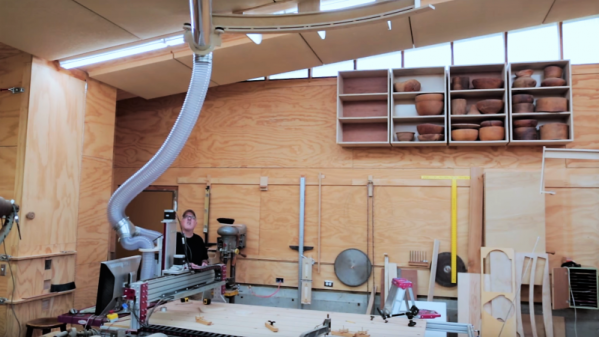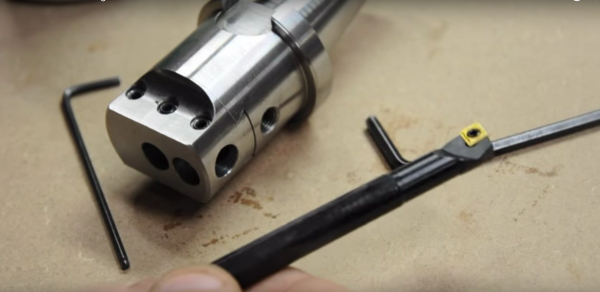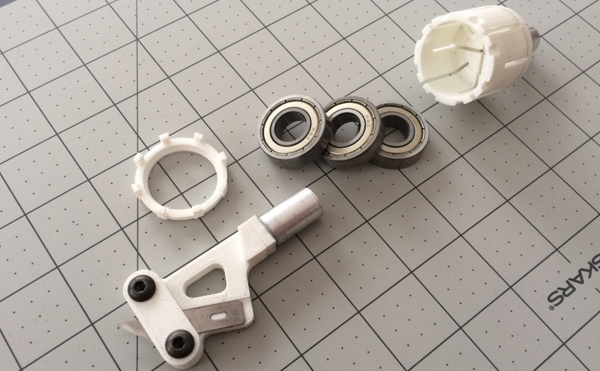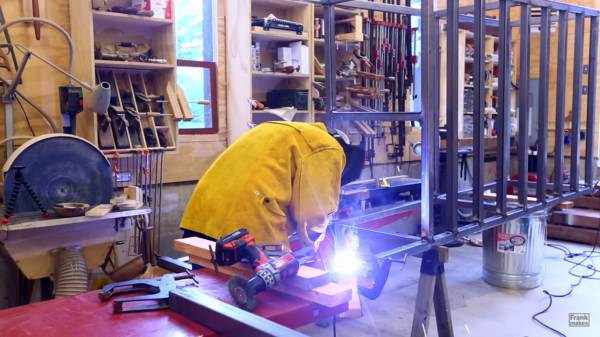[Frank Howarth] has a shop most woodworkers would kill for, stuffed with enough tools to equip multiple hackspaces — four radial-arm saws alone! But while the CNC router in the middle of the shop, large enough to work on an entire sheet of plywood, is a gem of a machine, it was proving to be a dusty nightmare. [Frank]’s solution was as unique as his workspace — this swiveling overhead dust extraction system.
The two-part video below shows how he dealt with the dual problems of collection and removal. The former was a fairly simple brush-bristle shroud of the type we’ve featured before. The latter was a challenge in that the size of the router’s bed — currently 8′ but soon to be extended to 12′ — and the diameter of the hoses needed to move enough air made a fixed overhead feed impractical. [Frank]’s solution is an overhead trolley to support the hoses more or less vertically over the router while letting the duct swivel as the gantry moves around the work surface. There were a few pitfalls along the way, like hoses that shorten and stiffen when air flows through them, but in the end the system works great.
Chances are your shop is smaller than [Frank]’s, but you still need to control the dust. This dust collector for a more modest CNC router might help, as would this DIY cyclonic chip separator.
Continue reading “Overhead Trolley Helps Clear The Air Over CNC Router”

















